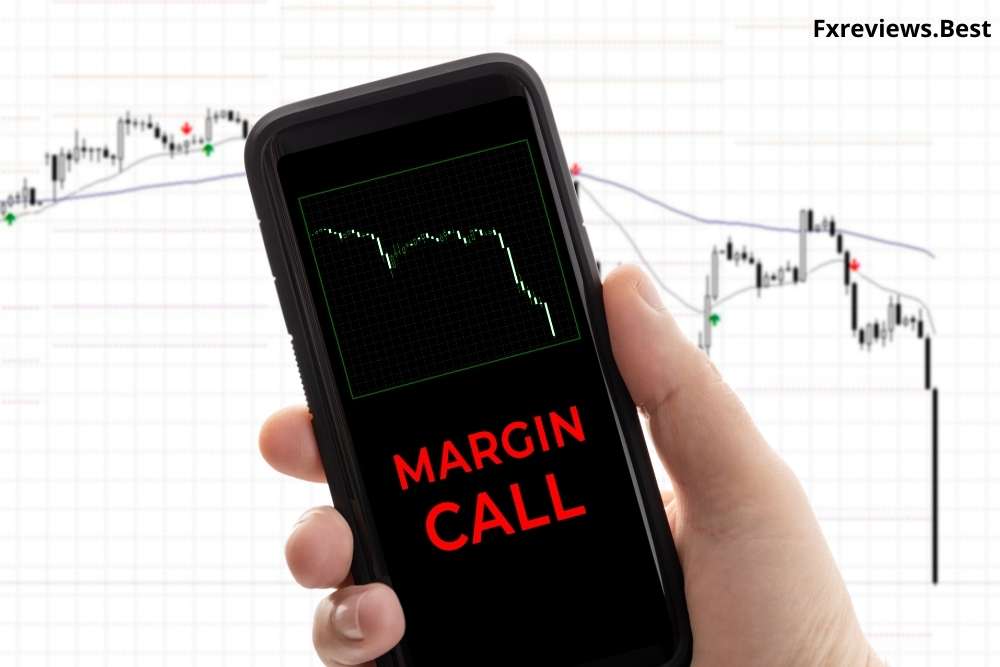Trading on margin enables you to borrow money in order to purchase securities such as stocks and make greater investments. While buying on margin might improve your returns, you also run the risk of losing your money if you invest with borrowed funds. They feared margin calls, which might force you to liquidate a large number of securities fast, even if at a huge loss, which is perhaps the largest risk of margin trading.
What is a Margin Call?
So here is the sophisticated margin call definition. A margin call serves as a reminder that you must restore your margin account to good standing. To improve the ratio of assets you own totally to the amount you borrowed, you may need to put cash or new securities into your account, or you may need to sell securities.
It happens when the value of a margin account drops below the account’s required maintenance margin. A brokerage firm demand that the margin account’s balance is brought up to the minimum maintenance margin requirement. To meet a margin call, the margin account’s investor may either deposit more funds, unimagined securities, or liquidate current assets.
Before we get into the intricacies of what circumstances may result in a margin call and how to avoid one altogether. It is important to understand how margin trading works. Basically, a Margin call meaning is just a wake-up call for investors.
Readout Blog: What is Leverage Trading? Is it Worth it?
How does Margin call work?
A margin call is sent to an investor when the balance of a margin account falls below the statutory minimum margin. A margin call is a broker’s demand that a customer tops up their account by infusing additional cash or selling a portion of the security to bring the account to the statutory minimum.
Buying on margin is the process of borrowing money from someone else, usually your brokerage, to buy more assets than you could with your own cash. A margin account is a form of brokerage account that allows you to take advantage of institutional leverage.
A limited grace period is given to the customer to take the necessary steps to achieve the margin requirements. If the customer fails to respond to the margin call, the broker may sell some of the securities to bring the account back up to the needed margin level. In some cases, your margin call payment may be returned to you if the rate returns towards the rate you agreed initially or if your transfer is completed.
The Financial Industry Regulatory Authority (FINRA) and other financial authorities require brokerages to set margin restrictions for customer trading accounts. When a customer’s account price is below the minimum equilibrium amount, the brokerage may or may not issue a margin call, compelling the consumer to top up their account. Instead, they may sell a portion of the customer’s shares without telling the customer to restore the margin account for maintenance margin.
Looking for the best Forex broker that suits your trading style and needs, ABInvesting can be a perfect choice in this case. Open a trading account with ABInvesting and start your journey today!
How to calculate margin call price?
Here is the equation or formula through which you calculate margin call price easily.
Margin Call Price = Initial Purchase Price x (1-Initial margin)/(1-Maintenance Margin)
Initial purchase price: Buying of the asset
Initial margin: Minimum amount need to be deposited (in percentage)
Maintenance margin: The amount of equity needs to be maintained in the margin account (in percentage)
Here is the example of margin call calculation: You took out a $5000 margin loan and paired it with $5000 of your own money. Then you could invest $10,000 in securities. You’d only have $3000 in equity if the market value of your investment dropped to $8000. This is because the maintenance margin is computed by subtracting the current value of your securities from the amount you owe, which in this example is $8000 – $5000.
If your brokerage business requires a 20% maintenance margin, you’ll need at least $1600 in your account because 20% of $8000 = $1600 in equity. In this case, the firm may issue a margin call, requiring you to deposit funds or sell securities to cover the shortfall.
Additional Margin
A stock’s or index’s margin is computed based on price fluctuation and is distinct for each. Now, if the stock price drops 5% on a given day, the market loss on your position is greater than the limit set by your broker. This indicates that your position has suffered a significant loss, and the margin you now have will be insufficient, requiring you to provide additional margin money. This is referred to as “extra margin.”
Keep in mind that if the broker determines that the margin is insufficient, he may close your transaction without notifying you, causing you to lose the money you invested. If, on the other hand, the broker notifies you and you provide the required additional margin, but the stock continues to move in the incorrect direction, your losses will continue to mount.
The catch is that you must square off or quit your holding at least for a month as part of the derivatives settlement process. If you lose money on a margin position, you must pay it back, and you may never get another chance if the market switches direction.
When you employ derivatives and margin trading for speculative trades, you run into these kinds of problems. If there are unexpected significant price swings, the margin call may be substantially greater than expected, and if you don’t have enough money, your stocks will be liquidated. Once this occurs, prices will continue to fall until the situation returns to normal.
Causes of margin call
If the value of your margin account goes below the brokerage firm’s maintenance margin requirement, you will receive a margin call. When the worth of the assets in your margin account falls, this usually happens. It’s possible that your brokerage will change its maintenance margin requirements to a larger amount in unusual instances.
If your account drops below the brokerage firm’s minimum maintenance requirement, the firm will issue a margin call trading and ask you to deposit money or securities into your margin account. If you don’t meet the margin call, your broker will sell your stocks until your account reaches the maintenance margin.
Financial companies may not always issue margin calls or notify you if your account has gone below the appropriate level of maintenance. In rare situations, they may choose to sell your stocks without notifying you in order to return you to the maintenance margin.
Make sure you read your company’s margin agreements thoroughly, so you understand the rules and how margin calls are handled. Remember that assets sold at a loss during margin calls are usually liquidated at a loss.
The anguish of forced stock liquidation stems from the fact that it eliminates the prospect of recouping your losses if and when the market recovers.
How to cover it?
If a margin call isn’t met, the broker has the option of liquidating the investor’s position. A margin call can be dealt with in one of three ways.
Margin calls are utilised to cover your account’s exposures across the board rather than topping up the deposit on a single deal if you have many trades on your account, which with its own maturity period and exposure, you may not be allowed to use your margin call to decrease the remaining balance on the first trade that matures.
- To fulfill the account’s maintenance margin needs, sell margined securities.
- Additional monies are deposited to meet the account’s maintenance margin requirement.
- To satisfy the account’s maintenance margin requirement, you need to deposit unmargined securities.
Margin Call Explained: Regulations
The Securities and Exchange Commission (SEC) of the United States advises investors to thoroughly examine their margin account agreements. Try avoiding not entering into a margin relationship with a broker without thoroughly reading the fine print and fully comprehending the risks of purchasing stock with other people’s money.
For many new investors, the most startling element concerning margin calls is that your broker is not compelled by law to tell you if your margin account is too low. Instead, your broker might simply sell your shares to satisfy the account’s maintenance level. Despite the fact that your broker issues a margin call, it has the ability to begin selling your shares while you wait for a deposit.
How to avoid a Margin Call?
You can reduce your chances of receiving a margin call by performing the following:
- Not investing a major chunk of balance. Putting aside some of your money as cash, rather than putting it all together in securities, will help you avoid margin calls. This is due to the fact that the value of the currency is constant, and you are always the sole owner of it.
- Prepare for the unexpected. Diversify your portfolio to ensure that it can survive market swings while remaining within the maintenance margin.
- Invest in assets with a high rate of return. When it comes to margin investing in general, this is a solid practice. You should always make sure that your investments can yield at least as much as the interest on your margin loan.
- Pay down your debts on a regular basis. Interest is usually charged to your margin account on a monthly basis. Margin loans, on the other hand, usually don’t have a defined payback plan, so you can pay them off whenever you like. You can keep your loan from ballooning out of hand by paying off interest or a portion of it each month.
- Create your own bare minimum. Over and above your brokerage’s maintenance margin, determine your own. When your account hits that limit, transfer funds across to avoid a margin call and your brokerage from selling any stocks.
Bottom Line
For investors, the bottom line is to avoid margin calls at all expenses. The easiest method to do so is to keep a careful eye on your assets and make sure you have enough funds in your margin account to fund the required upkeep. This necessitates the creation of a second cash account from which you can transfer funds to the margin account swiftly and efficiently.
Margin can assist raise gains in an investing account, but it can also magnify losses. It’s critical to ensure that your risk is adequately managed. Margin is only used for a few purposes. It should only be utilized by seasoned investors with a clear strategy and goal in mind.
Perhaps you’re investing now while you wait for your deposit next week. Or perhaps you’re following a certain options strategy. However, you must have a precise strategy in place.




